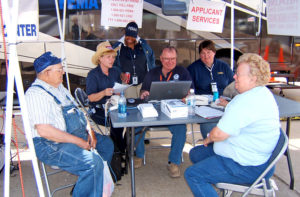Inequitable distribution of disaster aid hinders resilience
Disaster-related government spending in America is at an all time high. The Washington Post has reported that, “in a typical year, taxpayer spending on disaster relief is almost 10 times higher than it was three decades ago, even after adjusting for inflation.” Additionally, some of the United States’ highest disaster spending recorded has been in the last six years. However, recent studies and analyses have shown that the distribution of disaster aid (and other recovery resources) is perpetuating socio-economic inequities.

As sea levels rise and coastal flooding intensifies, FEMA has supported programs to manage retreat from flood-prone areas. In the U.S., voluntary government buy-outs of at-risk properties are the primary means of retreat. This process involves homeowners agreeing to sell their homes and relocate, while their homes are either moved or demolished. The previously occupied land then becomes an open space and serves as flood plain. Though FEMA funds this program, local governments administer the buy-outs, giving better funded and resourced governments a greater capacity to make use of the program. Consequently, a disproportionately higher number of buy-outs have been recorded in wealthier and more densely populated counties. However, within these counties, buy-outs are more likely to be administered in neighborhoods with lower-valued homes. Researchers say this could be due to lower buy-out costs in these neighborhoods, as well as local officials’ seeing an opportunity to “get rid of of neighborhoods they don’t feel are desirable parts of their community.” Both of these dynamics mean that funding is leveraged and influenced based on wealth instead of risk.

Another FEMA program, called individual assistance, has been shown to put low-income households at a disadvantage. Two aspects of the program’s implementation – eligibility cut-offs and financial burden of low-income households – create a system in which disaster relief is not equitable. This can happen when the damage to a house is not severe enough that it meets FEMA’s standard of repair costs. These estimates can either be different from the true repair costs, or underestimated in low-income neighborhoods. Additionally, a necessary repair below the threshold of eligibility can have a larger impact on the financial well-being of a low-income household compared to others, and greatly affect the household’s ability to be resilient.
Both individual assistance and buy-out programs function to mitigate risk and enhance recovery. Approaches which accommodate income status differences and ensure buy-outs are administered based primarily on risk can help bolster resilience in the face of the next disaster.
Sources and Further Reading
Disaster aid eligibility processes risk cutting out low-income households in need – The Urban Institute
Taxpayer spending on U.S. disaster fund explodes amid climate change, population trends – The Washington Post
Managed retreat through voluntary buyouts of flood-prone properties – Science Advances
Rich Counties Get More Help to Escape Climate Risk, New Data Show – The New York Times
